
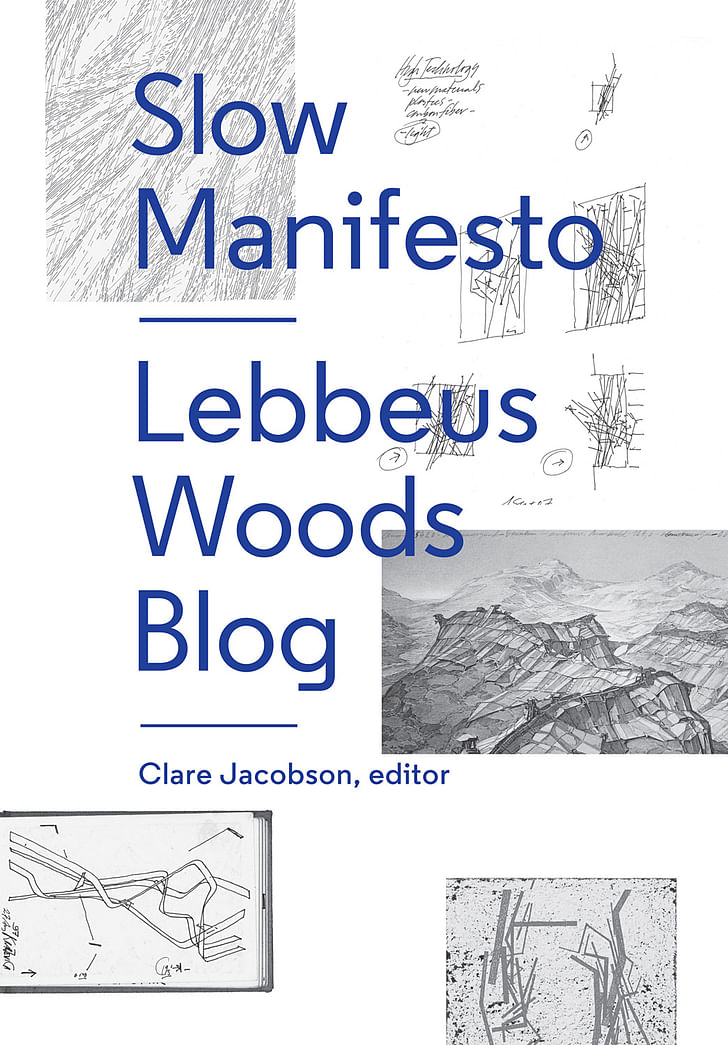
The champion of “radical reconstruction,” the revolutionary architect who wasn’t technically an architect, the artist, the teacher and theorist – Lebbeus Woods was also a blogger. Beginning in 2007 and lasting into 2012, up until a few months prior to his death, Woods posted drawings, articles, and journal-style ruminations to his own personal blog, drawing together his array of concerns that, in the words of the New York Times’ architecture critic Michael Kimmelman, “hoped to liberate architecture from its material tethers and encourage everybody who engaged with it to think more boldly and humanely.”
Woods’s drawings described, in commanding style, a speculative reality wrought by all-to-real forms of human stress and violenceNow, a new book celebrates Woods’s legacy by curating a selection of standout pieces from his blog into Slow Manifesto: Lebbeus Woods Blog.
Published by Princeton Architectural Press (which has worked with Woods before on two issues of Pamphlet Architecture and several books), Slow Manifesto draws a chronological narrative through the blog’s five-year span, and serves as a selective archive of the late architect/non-architect’s ideas and thought processes.
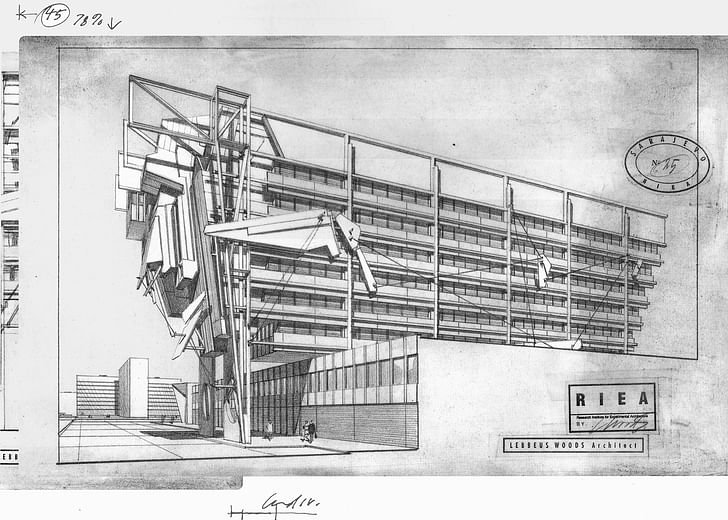
As Woods’s drawings described, in commanding style, a speculative reality wrought by all-to-real forms of human stress and violence, his art and writings resonated with the culture outside of architecture through films and museum exhibitions. With Slow Manifesto’s physical record, Woods’s blog may find continual influence. In the following interview, the editor of Slow Manifesto, Clare Jacobson, shares her own reflections on Woods’s work, and how they evolved through working with him.
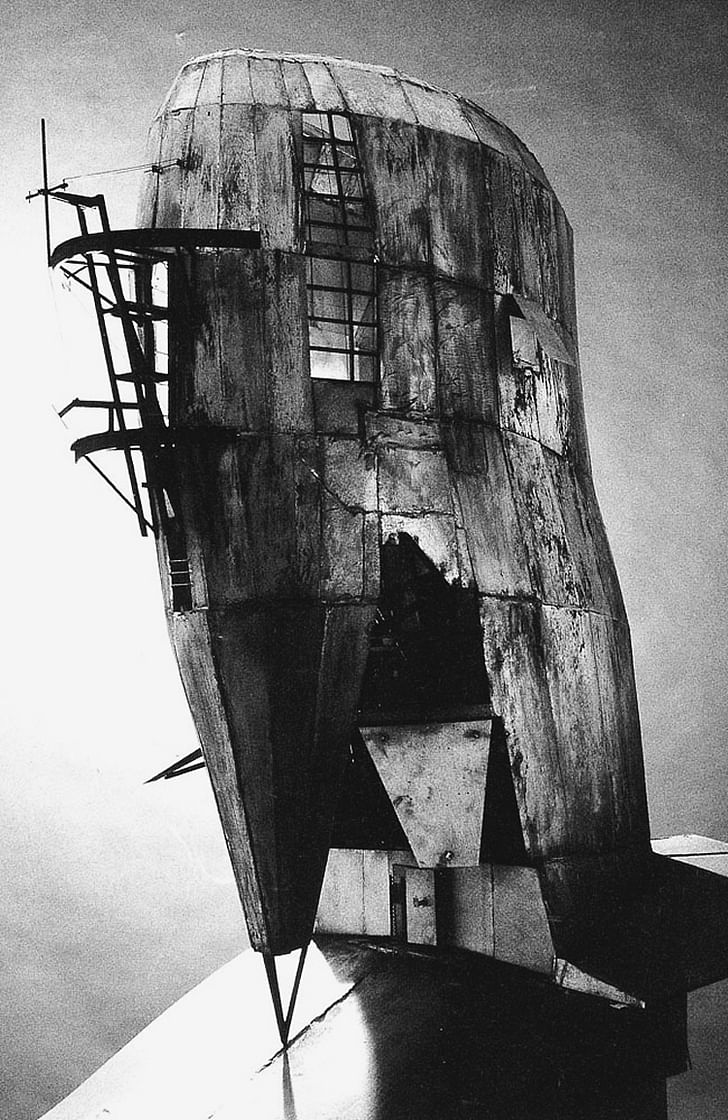
What was your working relationship with Lebbeus Woods like? How has your relationship to his work developed over the years?
I worked with Woods on five books – OneFiveFour, RIEA: The First Conference, War and Architecture, Radical Reconstruction, and The Storm and the Fall. Woods's 1988 book OneFiveFour was one of my first assignments as a 22-year-old editorial assistant at Princeton Architectural Press. Early in the course of the project, I sent Woods a letter defending my edits to his text. I can’t recall the exact wording, but I do remember how corny it was – something to the effect of, “As a stray line would diminish the power of your drawing, so too a stray comma would decrease the clarity of thought.” Some other author would rightfully have put me in my place. But Woods responded to my comma ridiculousness with grace and with patience. He accepted me as a partner in producing his book and, it seemed to me, even respected me for my willfulness. Anyone who has worked with Woods knows that he was a collaborator first and foremost. The concern for society that he expressed in his drawings and texts played out in his personal relationships; his collaborations were as important as his individual works. In working on OneFiveFour, Woods made me feel not like an editorial assistant but like a participant. That continued in all our subsequent work together.
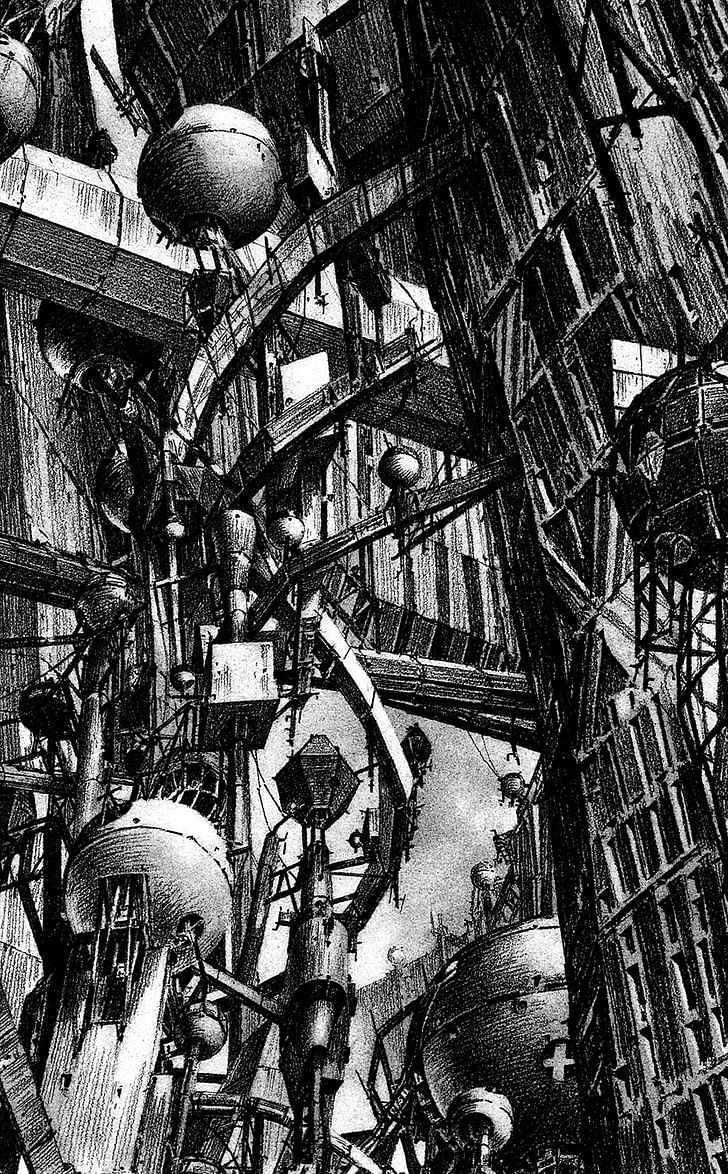
Describe the look and feel of the blog in its native form. How did you approach adapting the blog format into print?
I wanted the book to look and feel and read like a book – that is, to be a linear narrative punctuated by some surprises. I followed the chronology of Woods's blog in ordering the texts. Then I cut entire texts, rather than cut into texts, to get to a manageable amount of material. In that edit I tried to create a rhythm to the entries so that there was a pleasant his blog was a continuation of this practice. It was a place where he could work out iterations on a theme or, in this case, many themes.variety in the book's pace. I also edited the art to establish a good rhythm.
As you see it, what role did Woods’s blog serve in the context of his overall practice? Woods often worked in series. He became interested in a subject – say, revitalizing damaged buildings – and then worked on numerous drawings and texts to explore that subject. I think his blog was a continuation of this practice. It was a place where he could work out iterations on a theme or, in this case, many themes.
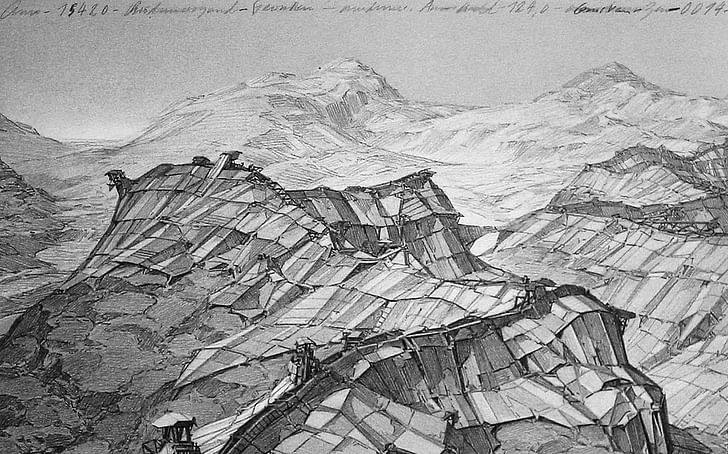
Do you see blogs by famous artists/architects like Woods’s having a more general impact on the nature of architectural celebrity?
Woods's direct and intimate interaction with people was part of his personality. Ask any of his colleagues or students, and each will have a personal story. So his blog was simply a continuation of his way of being. Different form; same Lebbeus. I can't imagine that "Architectural heavyweights" who "are not generally personally accessible" could somehow be transformed by starting a blog. To my mind, a blog is just a tool.
What insights does Blog give the reader into the artist nearing the end of his life, and reflecting back on a body of work? There is certainly some reflection in Slow Manifesto, especially late in the book. But I think overall the book is a forward-looking piece, just as the blog was. I suspect that Woods saw in the blog a new form in which to experiment with his writings and drawings, and also a new way to form community, and he seized on the new medium to extend his hand.
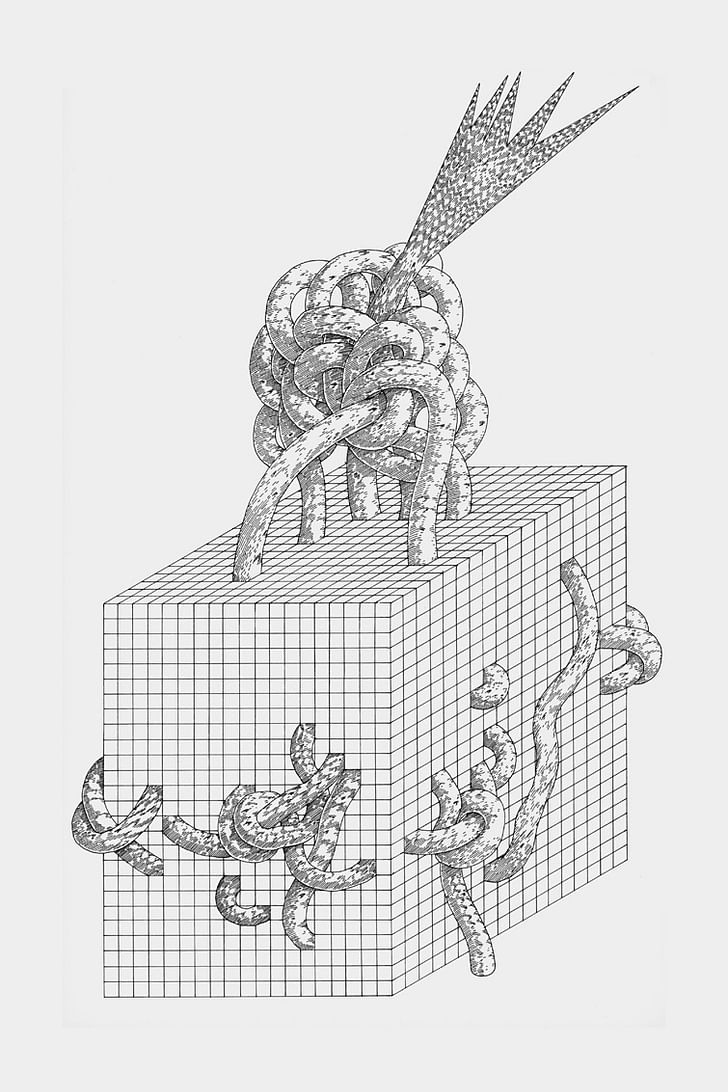

To the young, contemporary architect, what is essential about Woods’s work?
Woods's ideas are essential to any era of architecture.Woods's ideas are essential to any era of architecture. He was committed to advancing the political, social, and urbanistic importance of the built world. Today's architects, who tend to prioritize architectural form over all other design issues, can learn from Woods's drawn and written studies that the consequences of form-making are most important.
~ For a chance to win Slow Manifesto: Lebbeus Woods Blog, enter our book giveaway! Details can be found here. ~
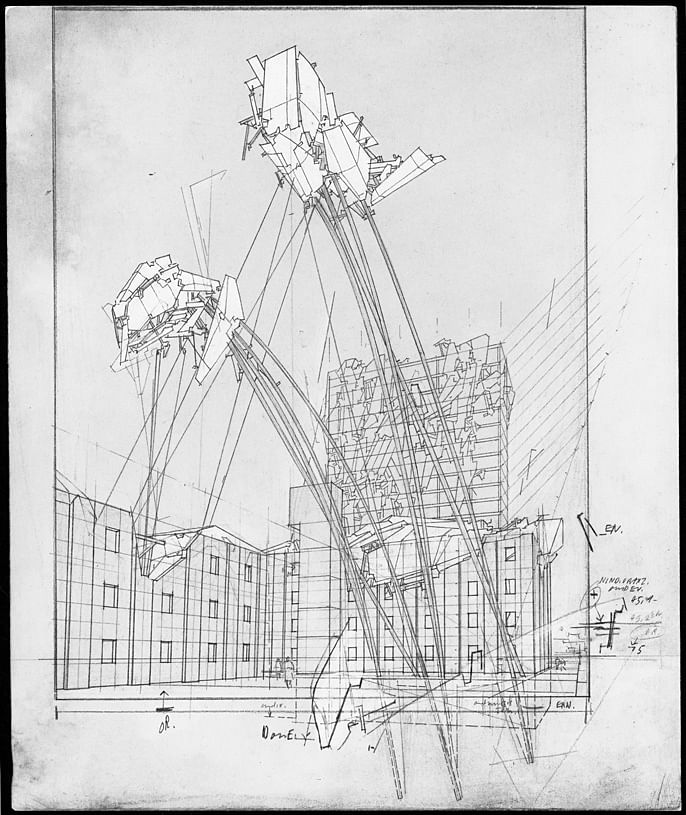
Former Managing Editor and Podcast Co-Producer for Archinect. I write, go to the movies, walk around and listen to the radio. My interests revolve around cognitive urban theory, psycholinguistics and food.Currently freelancing. Be in touch through longhyphen@gmail.com
4 Comments
He's like the Piranesi of modernism. A lot to mine if you like blade runner aesthetics.
With my own eyes in 2011 while working for Lebbeus I saw an award from the NY Chapter of the AIA for his contributions to our field.
If the author of this piece actually cares to know a thing about Lebbeus it is that he was is and always will be a true Architect.
His blog was perhaps his rawest form of expression as an Architect and I feel you have unfortunately missed an opportunity to write a piece with an accurate foundation of knowledge.
Dave Irwin, dave@theterraprojects.com
I apologize for the negativity of the above comment, I just know how important it was to Lebbeus that he was an Architect.
I find it troubling that you begin to split hairs about his qualifications in the opening paragraph. Especially with an intro with an Editor who has created a book that is perhaps one of his most personal contributions he has left with us.
We must remember him as he would like to be remembered, an Architect and not parse his works down to technicalities of media or liscensure.
Let us remember that our profession's beauty and growth lay in the grey area; a place where Lebbeus was Prince.
Thank you.
Dave Irwin, dave@theterraprojects.com
David you should hang-out here more (forum), there is probably a tinge sarcasm and massive amounts of allusion to the archinect forum crowd in that statement, if I was guessing.....
and now I will self-promoe
see my great work at www.vuuve.com
ahhh the internet....
Block this user
Are you sure you want to block this user and hide all related comments throughout the site?
Archinect
This is your first comment on Archinect. Your comment will be visible once approved.